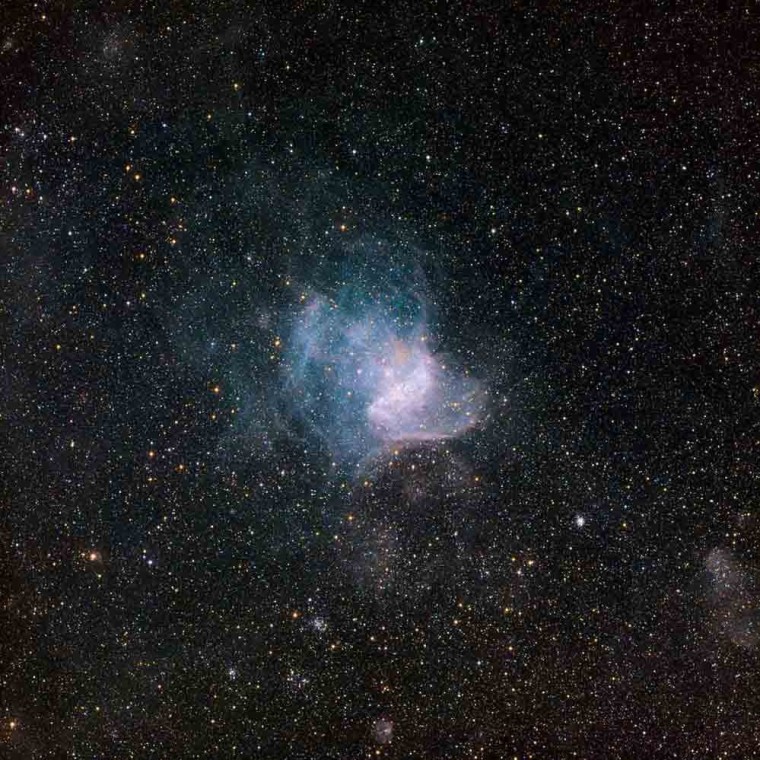A dramatic new image of a star cluster in our neighboring galaxy reveals light, wind and heat flowing in dramatic spirals.
The cluster, designated NGC 346, is a loosely bound collection of stars hovering in a nearby mini galaxy called the Small Magellanic Cloud. The bright, wispy cobweb shape is gas that has been heated up by surrounding stars until it's so warm it emits its own glowing light.
This area is also a star-forming region where brand new stars are being born. Massive stars will send out powerful winds that compress nearby gas until its density is large enough to ignite nuclear fusion, creating a stellar core. Many stars in NGC 346 are only a few million years old — relative babies on a cosmic scale. When new stars come onto the scene they too emit strong winds that alter the shape of the gas and dust around them and can spark even more star formation.
This hotbed of activity is about 210,000 light-years away toward the constellation Tucana (the Toucan). The Small Magellanic Cloud orbits around our own Milky Way galaxy, and can be seen as a hazy object with the naked eye.
The newly released image was captured by the 2.2-meter (7.2 foot) diameter telescope shared by the Max Planck Gesellschaft Institute and the European Southern Observatory at the La Silla Observatory in Chile.
